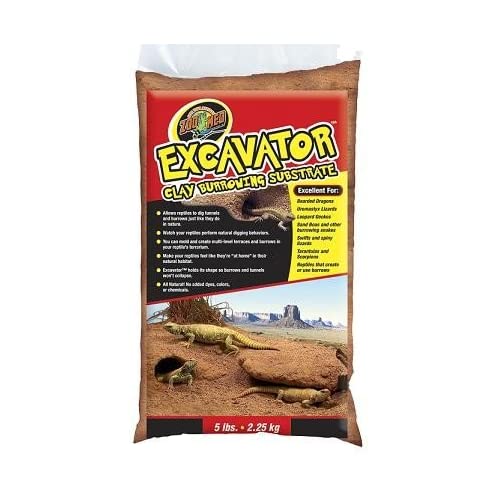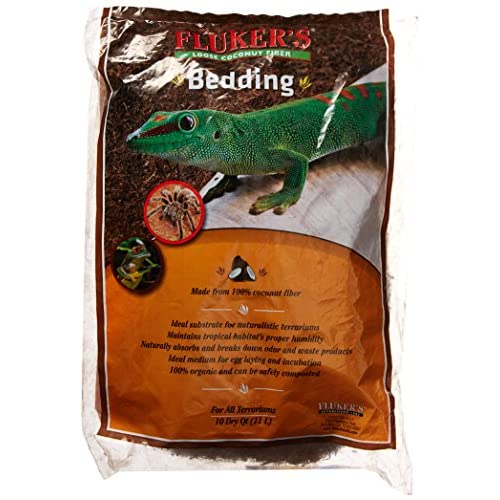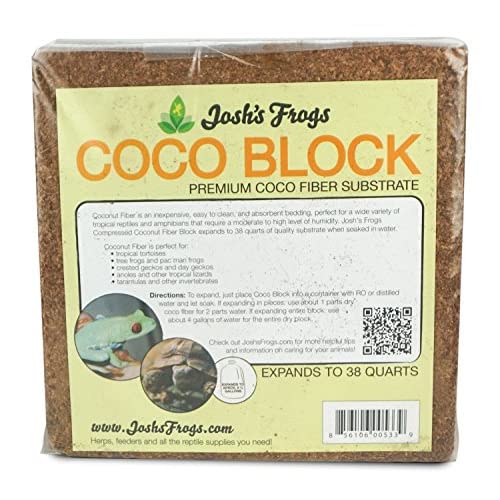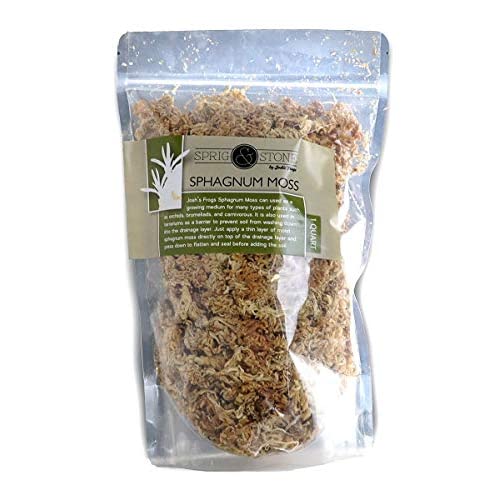Leopard geckos is a popular pet reptile today. It is a cute little creature, nor does it require much effort to take care of. However, the owner should also provide it with the best captive environment.
One of the factors that you have to prepare is the best substrate for leopard geckos. Loose substrate is a popular choice, although it is not recommended for leopard geckos.
Currently on the market there are many types of leopard geckos loose substrates so that you may be lost in that information.
But do not be discouraged, we have prepared for you a list of the best loose substrate for leopard geckos review 2020. And of course, it comes with some useful information for your choice.
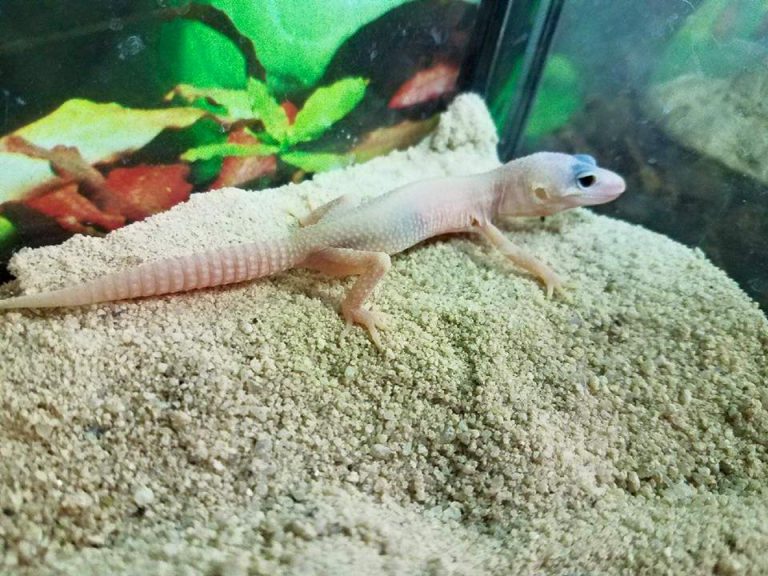
Top 4 Best Loose Substrate for Leopard Geckos Review 2021
Loose substrate is not recommended for leopard geckos. These substrates can get into the eyes or nose of reptiles and they can be extremely uncomfortable.
This substrate is also unsafe for reptiles’ digestive system because reptiles may eat the substrate (a natural behavior). We do not recommend using loose substrate for your leopard gecko. If you still want to use it, here is a list of some of the best / safest loose substrates for leopard geckos.
#1 Zoo Med Excavator Clay Burrowing Substrate
It can be said Zoo Med is a very prominent name on the reptile market today. Products from this manufacturer always receive much positive feedback from customers. They also have excellent quality, giving pets the best experience.
This substrate from Zoo Med is a great choice for leopard geckos and owners of loose substate fans. It can simulate a desert environment naturally and surely leopard geckos will enjoy it.
Especially when adding water, it becomes clay. That’s why leopard geckos can create caves and roads. Leopard geckos owners can also unleash their creativity when preparing terrains like challenges or hobbies for their pets.
Once dry, the clay will retain its shape. This will make it easier to clean and maintain. It also does not contain many impurities such as small gravel that can injure leopard geckos.
This product is well received by users because it provides an enjoyable experience for leopard geckos.
It also does not contain any dyes or pigments. This product is a natural material and has undergone a thorough processing. It is also affordable and quite competitive.
#2 Fluker’s Loose Coconut Bedding for Reptile
Coconut fiber is one of the more controversial substrates around whether it’s good for leopard geckos or not. Although controversial, it is still one of the most used substrates for leopard geckos.
This product from Fluker’s is one of the best options available today. It is the substrate from a famous brand called Fluker’s – one of the leading names when it comes to reptile industry. So that you can trust using the product.
With this coir, you can use dry or moist for leopard geckos. That means you can change the properties of the product based on the habitat needs of the leopard geckos.
If your pet loves a hot and dry environment, you just need to add this product as a substrate for it. And if they love an environment with high humidity, then add a little water to coir.
This product is 100% natural coir, does not contain any chemicals or dyes. It has also undergone the process of removing impurities and is carefully processed. So that you can be assured of the safety of the product.
After use, you can use this coir as an organic fertilizer for your garden. It can be said that this is one of the great advantages of coconut fiber.
This product is a 5 Quart bag, can use for a long time. It is also affordable and can be easily searched in the market.
#3 Josh’s Frogs Coco Block Fine Coco Fiber
Another coconut fiber option that you should consider is Josh’s Frogs Coco Block Fine Coco Fiber. Surely you are not new to Josh’s Frogs, this is a well-known manufacturer in the market and you can trust this manufacturer.
This coir is packed in 5 kgs and it will expand into 38 quarts after being soaked in water. Therefore, it is packed into a block to facilitate movement as well as storage.
This product is also completely natural coir, does not contain any chemicals that are harmful to leopard geckos. It is ideal for use in captivity that requires high humidity. And it is also perfect to use as a loose substrate for leopard geckos.
This coconut fiber has the ability to prevent bacteria and mold so although they retain moisture to the environment but do not harm leopard geckos. This is a big plus because some other loose substrates will become moldy after being maintained at high humidity.
It is also an ideal substrate for growing plants in leopard geckos. It acts as a moist and nutritious substrate, good support for plant growth.
You can clean this product easily and it does not create any unpleasant odor. Use about 1 inch of this substrate for leopard gecko enclosure. If you want your pet to develop natural digging behavior, use it.
#4 Josh’s Frogs Sphagnum Moss
Another product from John’s Frogs appears on this list and we’ll show you why it should be your choice. As we mentioned above, you can count on these products.
Sphagnum moss is a substrate that functions quite similar to coconut fiber. It is also a natural substrate, free of any chemicals. It is also a substrate that you can safely use for your leopard gecko.
Although sphagnum moss is slightly larger in size than coir, it is also perfect for creating a soft substrate for leopard geckos. This substrate has the ability to retain moisture very well and minimize unpleasant odors in captivity.
Sphagnum moss can work well in preventing mold and bacteria. You can use this substrate in combination with some other loose substrates to maximize your pet’s habitat.
Sphagnum moss can prevent the clutter from occurring in the enclosure of leopard geckos. It also prevents rapid drainage and evaporation.
You can easily clean this substrate. After use, you can also apply it to the plants around your garden.
This substrate is affordable and can last a long time.
What are the leopard gecko substrate requirements?
For any substrate, there are pros and cons. You also cannot use any substrate for leopard geckos. The best substrate for leopard geckos needs to meet the following requirements:
#1 Softness
Leopard geckos’ substrates need a certain softness so they don’t hurt them. Substrate textures will damage the legs, skin and other exposed parts.
However, you should not choose very smooth substrates like sand. Such substrates will produce dust and may get caught in the eyes or nose of leopard geckos.
You should choose substrates that are not too hard nor too smooth like coir, moss, etc. If they are too dry, add a little water to make the substrate softer.
#2 Humidity
A good substrate for leopard geckos should be able to retain moisture and provide moisture to the pet’s habitat.
Once it has the ability to retain moisture, the substrate will work well with maintaining softness. Moisture is also one of the important factors directly affecting the health and life of leopard geckos.
Different substrates also have different moisturizing abilities. So you should first find out about their ability to retain moisture to see what is the right moisture to add.
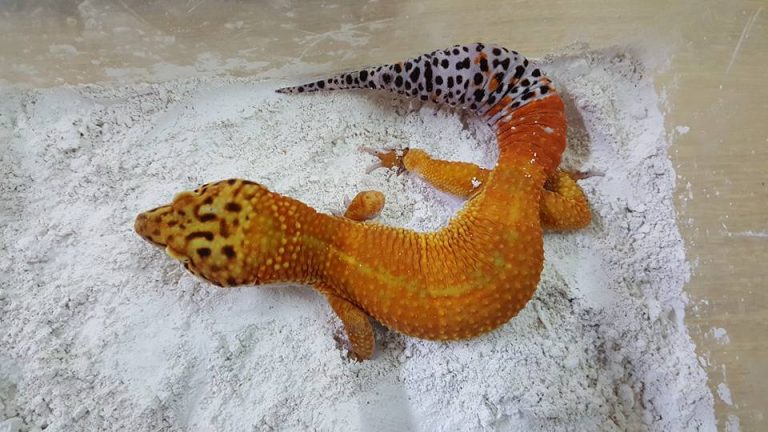
#3 Eliminate droppings
Any substrate for leopard geckos should be able to remove pet waste. Otherwise, leopard geckos wastes will not be disposed of and will cause harmful bacteria, mold and odors.
A substrate that does not handle droppings will expose your pet to potential health risks. And probably you and your pet will not be able to tolerate the smell of droppings if not treated.
#4 Meet the needs of leopard geckos
Leopard geckos are dynamic reptiles, so they work and move a lot in captivity. One of their common behaviors is burrowing.
That is why you should choose a substrate capable of meeting these needs of them. Leopard geckos can perform their own digging behavior at any time, and it also does that action when breeding (to hide eggs).
Leopard geckos substrate should be soft so as not to hurt it. And it should not be too small to affect the nose or eyes of the leopard geckos.
What are some popular substrates for leopard gecko?
Besides loose substrates, there are a number of other common substrates. These substrates are also a safe choice for leopard geckos and are also easy to find on the market.
Some other common substrates for leopard geckos are:
#1 Reptile carpet
This type of substrate is widely chosen because of its safety and convenience. Reptile carpet is well structured, leopard geckos cannot eat it and it is also reusable.
Reptile carpet usually comes with a roll and you can cut it to the size appropriate to the leopard geckos enclosure. Reptile carpet simulates natural substrates like sand, grass, etc. So it gives a special appearance to the leopard geckos habitat.
You can clean the reptile carpet as often as you would a regular carpet. You can then reuse those carpets for leopard geckos habitat.
That is one of the greatest benefits of this type of substrate. This is also an economical option because you can use a reptile carpet roll for a very long time.
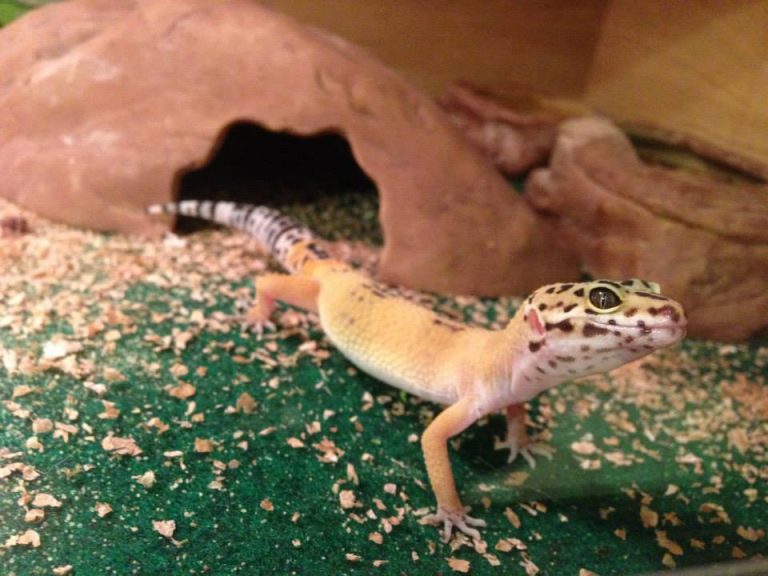
#2 Paper towels
This is one of the most economical options for tight budgets. And it is also a temporary option for those who have not found the best substrate for leopard geckos.
Paper towels have good absorbency, do not cause mold or unpleasant odors. It can be easily removed and replaced immediately.
With this type of substrate, you don’t have to worry about leopard geckos eating the substrate or it could be injured by the substrate. It has certain softness and good absorbency.
However, it cannot give leopard gecko’s captive environment a beautiful appearance. But it is safe and economical to use.
#3 Tiles
Tiles are another popular choice. You can find it in any area around your home, and it is also available at many pet stores.
Tiles are the substrate that provides maximum operating space for leopard geckos. It is easily cleaned and also reusable. With this substrate, you can still ensure the safety as well as the special appearance for the leopard geckos’ captive environment.
It also has good absorbency and eliminates unpleasant odors in an enclosed environment. However, you should pay attention to completely remove sharp edges to avoid injuring your pet.
Conclusion
Leopard gecko is a small but very easy to take care of reptile. But also because of that it is vulnerable to the surrounding elements. So you should choose the best loose substrate for leopard geckos to avoid hurting your pet.
Choose a good substrate based on leopard geckos requirements as well as a quality substrate standard. Do not be bothered to learn about leopard geckos substrates because it will never harm your pet.
